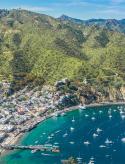Catalina Island’s dramatic natural beauty, inviting seaside ambiance and charming waterfront have made the resort destination a muse for generations of artists. Thanks to that legacy, it’s not a surprise that Avalon is also home to a number of public art installations.
In the 1920s, when William Wrigley, Jr., was developing the island into the international destination it has become, the chewing gun magnate invested in a number of artistic endeavors to beautify the island and give Avalon its own identity. One of the most obvious of those endeavors remains today in the colorful Catalina tiles that bedeck buildings, adorn fountains and embellish walls.

Produced on the island for only 10 years, the popularity of Catalina tile and pottery continues to this day, with private collectors investing thousands of dollars for rare pieces. Visitors can discover Catalina tile on buildings throughout Avalon, as well as on the Sombrero Fountain planter at the roundabout on Crescent Avenue and the Wrigley Fountain near Wrigley stage. Most of the tiles on the fountains have been recreated and installed by local tile artist Robin Cassidy.
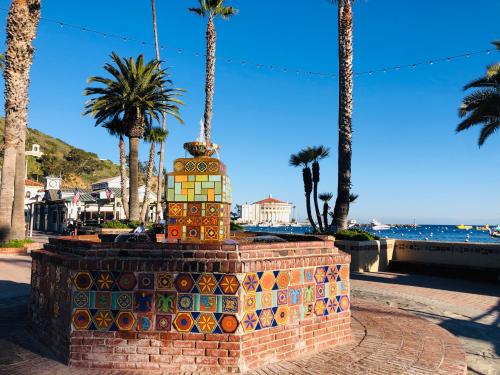
Inspired by the enduring legacy of that time, contemporary artisans have crafted tile inspired by original Catalina tile. One of the largest installations of tile is along Via Casino Way. Installed in 1999 and funded by the Miller family in honor of Gordon and Eddie Miller, this public art project includes colorful decorative tiles as well as a number of historic scenes and underwater views.
Just past the tile installation on Via Casino Way, visitors will discover a tile and rock sculpture honoring the island’s original inhabitants. Commissioned by the Matt Brown family and created by Will Richards, the sculpture is titled Bay of the Seven Moons, which many claim was the original name of what we now know as Avalon.
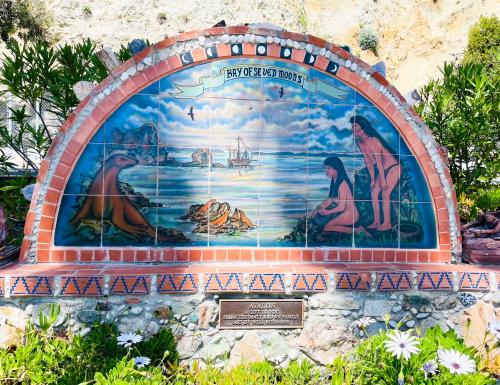
Visitors wandering Avalon’s streets will also discover bronze sculptures that may homage to memorable creatures who had an impact on the human inhabitants of Catalina Island. The first of these is Old Ben, a large bull sea lion who discovered that humans could be an easier source of fish than the sea. At the turn of the last century, Old Ben was well known for cavorting around the pier and lumbering along Crescent Avenue, procuring fish from locals and visitors eager to interact with the impressive mammal. Today Old Ben is memorialized by a bronze statue that welcomes everyone at the corner of Crescent Avenue and Pebbly Beach Road.

A much smaller mammal captured Avalon’s heart in the 1970s & ‘80s. Leroy the cat was the town’s unofficial mascot and is memorialized by a small sculpture near Wrigley Stage as well as a couple of books. Leroy’s bronze was crafted by local artist Will Richards and funded by the Catalina Humane Society.
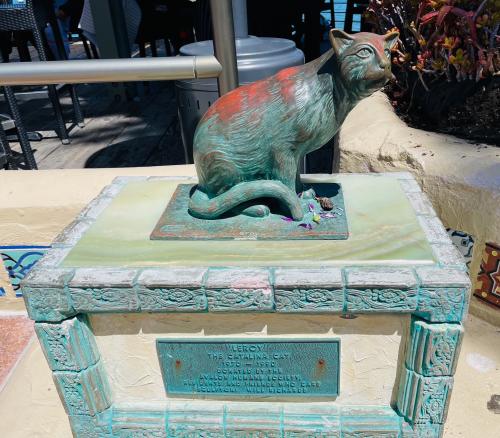
Visitors hoping to get a photo with Catalina Island marine life can do so – thanks to two resin replicas in the Metropole Marketplace. Bay the Seven Moons owner Autumn Reifensnyder purchased the first of the two sculptures, a sea lion, to give visitors a fun photo opportunity. When the sea lion was stolen as a prank gone wrong, the perpetrators were quickly tracked down – it is an island, after all. As restitution, the pranksters funded the creation of the whale sculpture that now accompanies the returned sea lion.
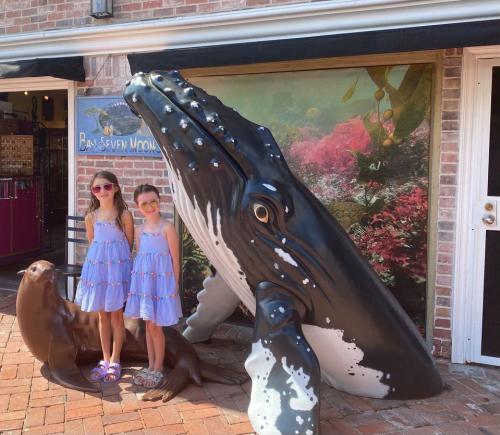
One of Avalon’s newest public art projects can be found in the alley behind the Edgewater Hotel. Inspired by Instagram culture and painted by Kelsey Montague, What Lifts You features a large pair of wings embellished with creatures both real and mythical.

Avalon’s Skate Park is another great place to discover public art. Constance Garcia painted an array of whimsical creatures that decorate the walls and ramps at this popular destination for teens.


